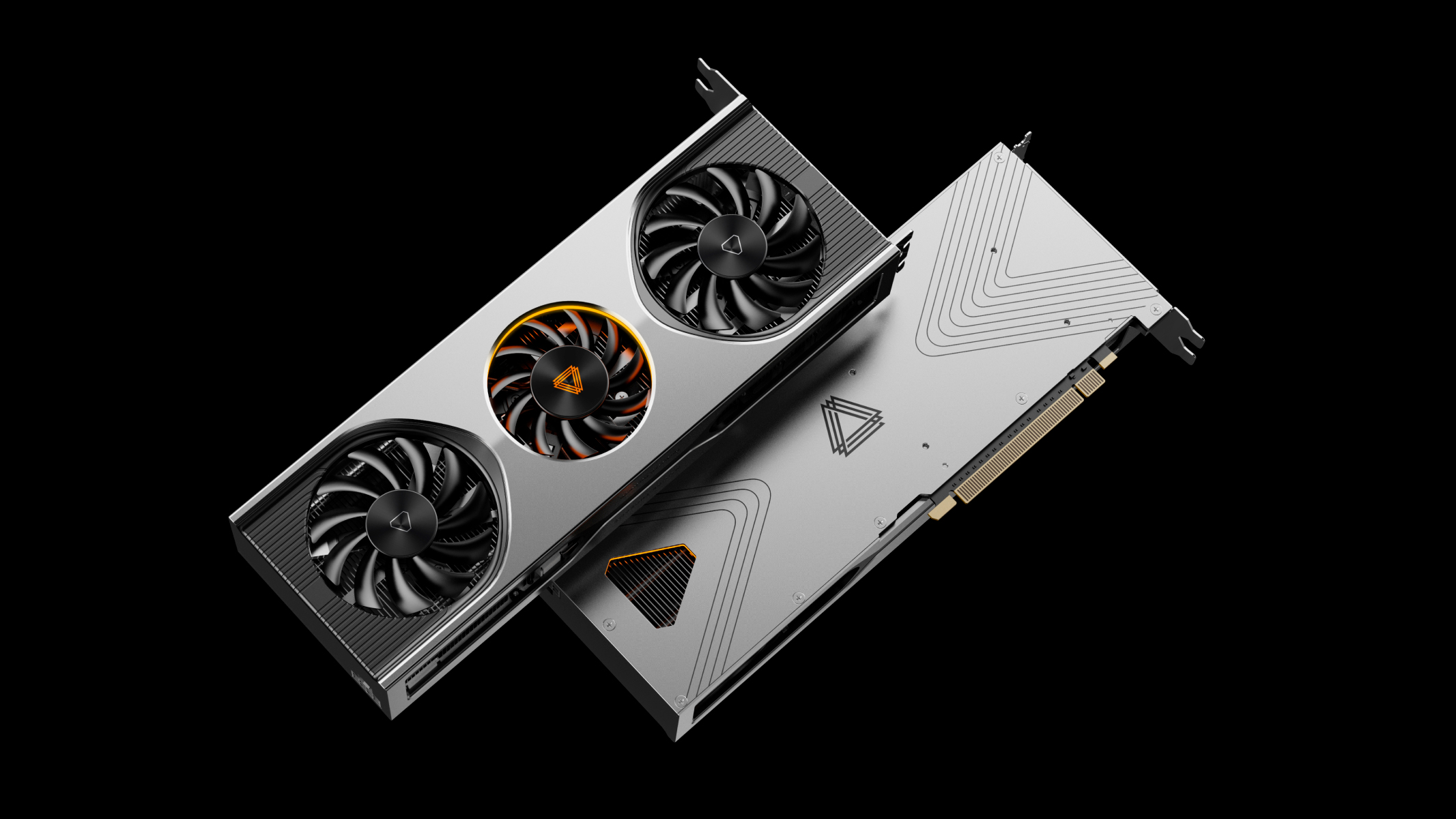
Chinese-Made PCIe 5.0 Gaming GPU Benchmarks Emerge
China doesn’t have many homebrew graphics cards, so expectations were high when graphics card manufacturer Moore Threads revealed the MTT S80. It’s hard to tell whether the MTT S80 has what it takes to compete with the best graphics cards, but hopefully, graphics card collector Löschzwerg’s (opens in new tab) latest benchmarks can provide some insight.
While Moore Threads is green behind the ears, the company has strong leadership. Former Nvidia global VP and China GM Zhang Jianzhong founded Moore Threads in 2020, so the Chinese fabless semiconductor company is a newcomer to the graphics card game. Besides being China’s domestic graphics card, the MTT S80 has garnered a fair amount of hype outside the country since it’s the first PCIe 5.0 gaming graphics card to hit the market. Nvidia’s GeForce RTX 40-series (Ada Lovelace) and AMD’s Radeon RX 7000-series (RDNA 3) products are still on PCIe 4.0.
The MTT S80 is the successor to the MTT S60 and still leverages the same MT Unified System Architecture (MUSA) architecture. It supports modern APIs, including CUDA, DirectX, OpenCL, OpenGL, and Vulkan. The Chunxiao GPU, manufactured under the 12nm process node, powers the MTT S80. Like Nvidia and AMD, the MTT S80 embraces AV1 encoding support in addition to other popular formats, such as H.264, H.265, and VP9.
The MTT S80, which supports PCIe 5.0 x16, wields 4,096 MUSA cores operating at 1.8 GHz to offer up to 14.4 TFLOPs of FP32 performance. This places the Chinese graphics card between the GeForce RTX 3060 (12.7 TFLOPs) and GeForce RTX 3060 Ti (16.2 TFLOPs) or, alternatively, the Radeon RX 6750 XT (13.3 TFLOPs) and Radeon RX 6800 (16.2 TFLOPs). Moore Threads outfits the MTT S80 with 16GB of 14 Gbps GDDR6 memory across a 256-bit memory interface. This arrangement is suitable for a maximum theoretical memory bandwidth of up to 448 GBps, on equal footing with the GeForce RTX 3060 Ti.
The MTT S80 features your typical dual-slot design with a triple-fan cooling solution. It’s a gaming graphics card; some RGB eye candy is inevitable. The graphics card utilizes an 8-pin EPS connector, yes, the kind that you find on motherboards. It has a 255W TBP (total board power), and one EPS connector supplies up to 300W. The MTT S80 has the same outputs as Nvidia’s flagship GeForce RTX 4090. In addition, you receive three DisplayPort1.4a outputs and one HDMI 2.1 port to support up to four 8K displays.
Moore Threads MTT S80 Benchmarks
| Graphics Card | Final Fantasy XIV: Endwalker | Unigine Heaven D3D11 1080p 8xAA Ultra | 3DMark06 Default | 3DMark06 1080p 8xAA 16xAF | 3DMark03 1080p Default | 3DMark03 1080p 8xAA 16xAF |
|---|---|---|---|---|---|---|
| Arc A770 | N/A | N/A | 40,809 | 36,052 | 141,302 | 58,294 |
| MTT S80 | 4,312 | 551 | 14,780 | 12,895 | 55,422 | 37,746 |
| GeForce GTX 680 | N/A | 1,178 | N/A | N/A | N/A | N/A |
| Radeon HD 7950 Boost | N/A | 1,108 | N/A | N/A | N/A | N/A |
To say that benchmarking the MTT S80 was difficult is an understatement. Löschzwerg emphasized that the graphics card’s performance and driver were wonky. The GPU utilization wasn’t optimal, and the graphics card rarely showed its full potential, suggesting a lack of driver optimization. Tessellation doesn’t work with the current driver and causes crashes on Unigine Heaven, 3DMark 11, and Final Fantasy XIV: Endwalker. Surprisingly, Resizable BAR works fine.
The results revealed that the Arc A770 outperformed the MTT S80 by over 170% in 3DMark06 on both presets. Intel’s graphics card also delivered 155% higher performance in 3DMark03. With the more demanding preset, the Arc A770 still beat the MTT S80 by a 54% margin.
The MTT S80 scored 551 points in Unigine Heaven at 1080p 8xAA on the ultra preset. Another Twitter user (opens in new tab) provided the scores for the GeForce GTX 680 and the Radeon HD 7950 Boost. The former had a 114% higher score, while the latter showed a 101% better score than the MTT S80.
The MTT S80 finished the Final Fantasy XIV: Endwalker benchmark with a score of 4,312 points. Unfortunately, the reviewer used custom settings so we couldn’t compare it to our results. However, the score slides between the 4,000 to 5,999 range, equivalent to standard performance, meaning the graphics card has what it takes to run the game on default settings. Löschzwerg also tested the MTT S80 with Crysis, and while the graphics card appears to run it fine, he didn’t provide any performance numbers.
The power metrics are a real shocker, though. The test system, which comprises the Core i5-10400 and ASRock B560M-HDV, idles around 22W. With the MTT S80, the idle power was about 131W, conveying that the graphics card consumes 109W while idling. On the other hand, the peak system power consumption was 315W, so the MTT S80 consumed 293W. Again, the values are ridiculously high. For example, even the enthusiast-grade GeForce RTX 4070 Ti is a 285W graphics card.
With the driver’s current state, the MTT S80 is potentially leaving some performance on the table. Officially, the graphics card supports around 20 DirectX games, but performance is a hit or miss. The graphics card performs better on DirectX 9 titles than on DirectX 11. However, there’s still a long way to go regarding game compatibility.
The MTT S80 retails for 2,999 yuan or $442.65 on JD.com (opens in new tab), a popular Chinese online retailer. Unfortunately, it won’t be a suitable option since gamers can still purchase Intel, AMD, or Nvidia graphics cards in China. However, if restrictions on exports to China get harsh, the MTT S80 could gain relevance.

